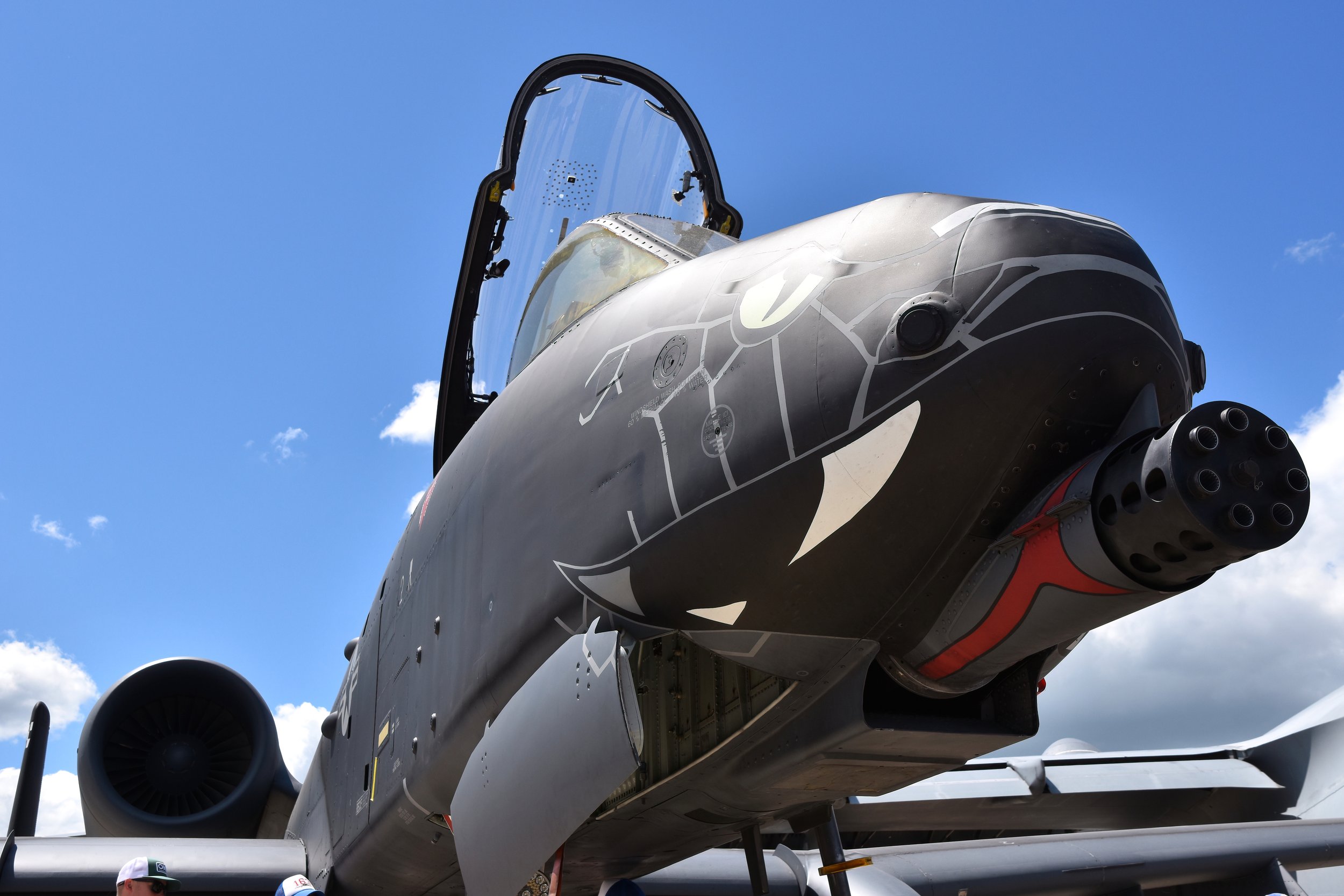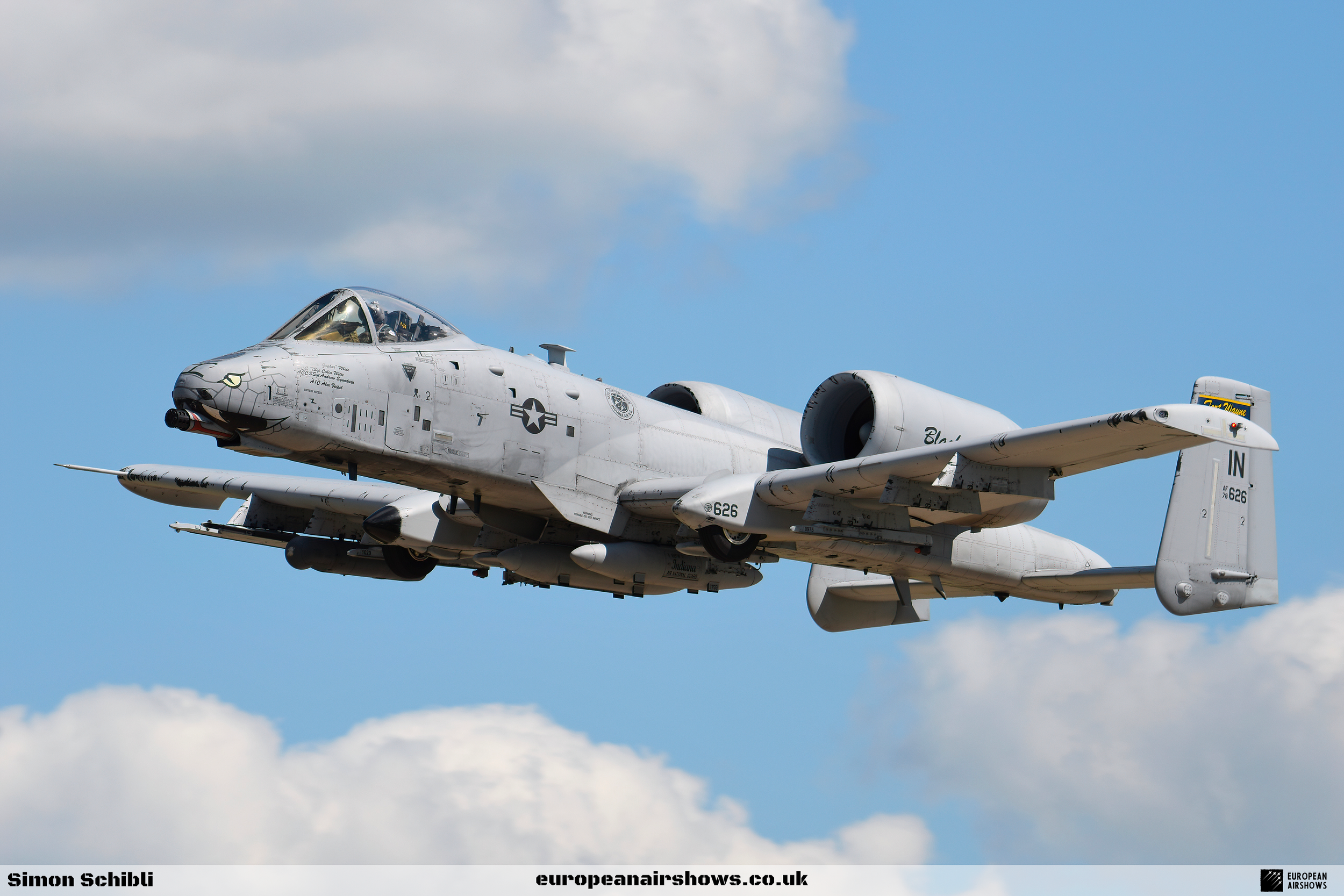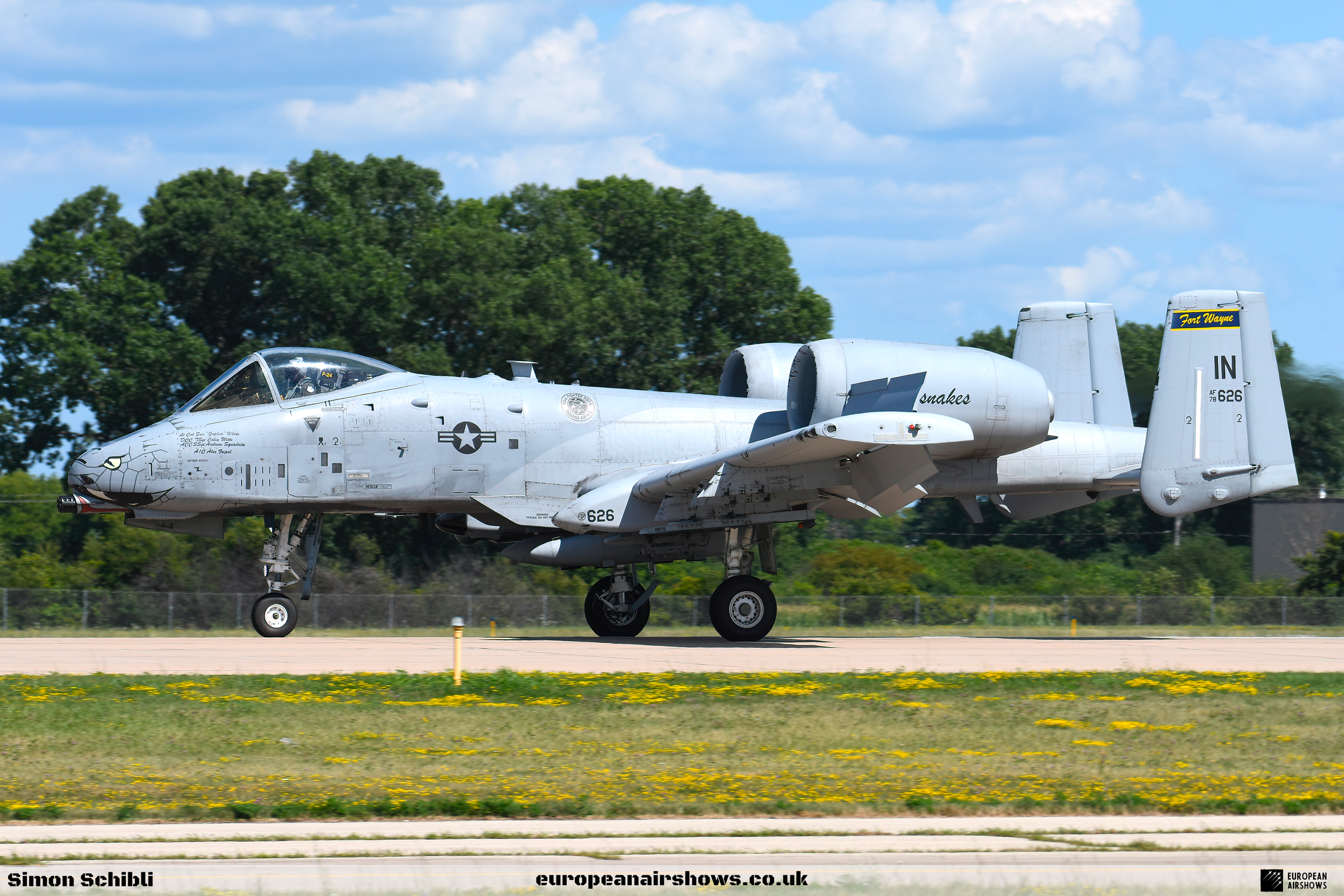
May 10 / A-10 Thunderbolt II first flight
First Flight 10 May 1972
Fairchild Republic A-10 Thunderbolt II
The Fairchild Republic A-10 Thunderbolt II is a single-seat, twin-turbofan, straight-wing, subsonic attack aircraft developed by Fairchild Republic for the United States Air Force (USAF). In service since 1976, it is named for the Republic P-47 Thunderbolt, but is commonly referred to as the "Warthog" or simply "Hog". The A-10 was designed to provide close air support (CAS) to friendly ground troops by attacking armoured vehicles, tanks, and other enemy ground forces; it is the only production-built aircraft designed solely for CAS to have served with the U.S. Air Force. Its secondary mission is to direct other aircraft in attacks on ground targets, a role called forward air controller-airborne; aircraft used primarily in this role are designated OA-10.
The A-10 was intended to improve the performance and firepower of the Douglas A-1 Skyraider. The Thunderbolt II's airframe was designed around the high-power 30 mm GAU-8 Avenger rotary autocannon. The airframe was designed for durability, with measures such as 1,200 pounds (540 kg) of titanium armour to protect the cockpit and aircraft systems, enabling it to absorb damage and continue flying. Its ability to take off and land from relatively short and/or unpaved runways permits operation from airstrips close to the front lines, and its simple design enables maintenance with minimal facilities.
It served in the Gulf War (Operation Desert Storm), the American-led intervention against Iraq's invasion of Kuwait, where the aircraft distinguished itself. The A-10 also participated in other conflicts such as in Grenada, the Balkans, Afghanistan, the Iraq War, and against the Islamic State in the Middle East.
The A-10A single-seat variant was the only version produced, though one pre-production airframe was modified into the YA-10B twin-seat prototype to test an all-weather night-capable version. In 2005, a program was started to upgrade the remaining A-10A aircraft to the A-10C configuration, with modern avionics for use with precision weaponry. The U.S. Air Force had stated the Lockheed Martin F-35 Lightning II would replace the A-10 as it entered service, but this remains highly contentious within the USAF and in political circles. The USAF gained congressional permission to start retiring A-10s in 2023, but further retirements were paused until the USAF could demonstrate that the A-10's close-air-support capabilities could be replaced.
On 8 September 1966, General John P. McConnell, Chief of Staff of the USAF, ordered that a specialized CAS aircraft be designed, developed, and obtained. On 22 December, a Requirements Action Directive was issued for the A-X CAS airplane, and the Attack Experimental (A-X) program office was formed. On 6 March 1967, the USAF released a request for information to 21 defence contractors for the A-X.
In May 1970, the USAF issued a modified, more detailed request for proposals for the aircraft. The threat of Soviet armoured forces and all-weather attack operations had become more serious. The requirements now included that the aircraft would be designed specifically for the 30 mm rotary cannon. The RFP also specified a maximum speed of 460 mph (400 kn; 740 km/h), takeoff distance of 4,000 feet (1,200 m), an external load of 16,000 pounds (7,300 kg), 285-mile (460 km) mission radius, and a unit cost of US$1.4 million ($10.5 million today). The A-X would be the first USAF aircraft designed exclusively for CAS. During this time, a separate RFP was released for A-X's 30 mm cannon with requirements for a high rate of fire (4,000 rounds per minute) and a high muzzle velocity. Six companies submitted aircraft proposals, with Northrop and Fairchild Republic in Germantown, Maryland selected to build prototypes: the YA-9A and YA-10A, respectively. General Electric and Philco-Ford were selected to build and test GAU-8 cannon prototypes.
Two YA-10 prototypes were built in the Republic factory in Farmingdale, New York, and first flown on 10 May 1972 by pilot Howard "Sam" Nelson. Production A-10s were built by Fairchild in Hagerstown, Maryland. After trials and a fly-off against the YA-9, on 18 January 1973, the USAF announced the YA-10's selection for production. General Electric was selected to build the GAU-8 cannon in June 1973. The YA-10 had an additional fly-off in 1974 against the Ling-Temco-Vought A-7D Corsair II, the principal USAF attack aircraft at the time, to prove the need for a new attack aircraft. The first production A-10 flew in October 1975, and deliveries commenced in March 1976.
One experimental two-seat A-10 Night Adverse Weather (N/AW) version was built by Fairchild by converting the first Demonstration Testing and Evaluation (DT&E) A-10A for consideration by the USAF. It included a second seat for a weapon systems officer responsible for electronic countermeasures (ECM), navigation and target acquisition. The N/AW version did not interest the USAF or export customers. The two-seat trainer version was ordered by the USAF in 1981, but funding was cancelled by U.S. Congress and was not produced. The only two-seat A-10 resides at Edwards Air Force Base's Flight Test Center Museum.
On 10 February 1976, Deputy Secretary of Defense Bill Clements authorized full-rate production while the first A-10 was accepted by the USAF Tactical Air Command on 30 March 1976. Production continued and reached a peak rate of 13 aircraft per month. By 1984, 715 airplanes, including two prototypes and six development aircraft, had been delivered.





